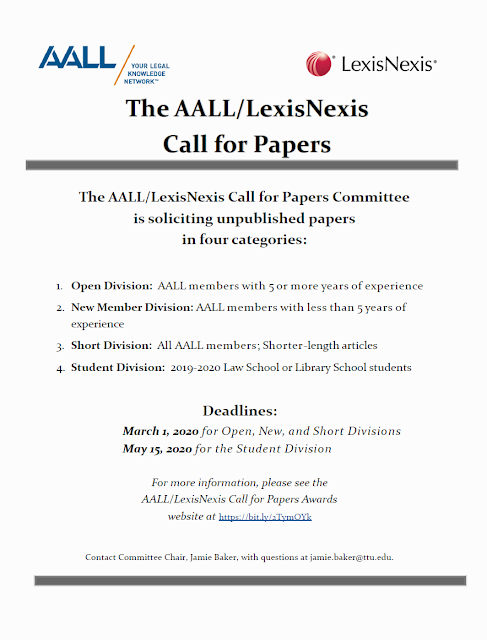The Origins Of The Bluebook Revealed
The things we spend our time on: Two librarians at Yale Law School have found that Yale Law School created The Bluebook, not The Harvard Law Review.
As noted in the NYTimes article:
Among the low points in an American legal education is the law student’s first encounter with The Bluebook, a 582-page style manual formally known as “A Uniform System of Citation.” It is a comically elaborate thicket of random and counterintuitive rules about how to cite judicial decisions, law review articles and the like. It is both grotesque and indispensable.
True, true, and true. And the creation of this behemoth was originally credited to The Harvard Law Review.
The Harvard Law Review has long claimed credit for creating The Bluebook. But a new article from two librarians at Yale Law School says its rival’s account is “wildly erroneous.”
The standard account of the origins of The Bluebook is reflected in a 1987 speech by Erwin N. Griswold, who had been president of The Harvard Law Review, dean of Harvard Law School and solicitor general of the United States. The speech is reproduced on the law review’s website.
The Bluebook, he said, was based on a booklet prepared by Harvard students in the 1920s. “Other law reviews heard about it, and made suggestions for its improvement,” he said. “This led to a meeting of the presidents of the Harvard, Columbia and University of Pennsylvania Law Reviews, and The Yale Law Journal.”
Mr. Shapiro and Ms. Krishnaswami trace the origins of The Bluebook to an eight-page booklet prepared in 1920 by Karl N. Llewellyn, who was editor in chief of The Yale Law Journal and would become an enormously influential law professor. A page of the booklet, possibly written with a colleague, set out a few sensible citation conventions, illustrating them with fake examples.
A decision from the Connecticut Supreme Court should be cited this way, it said: “Jones v. Smith (1911) 92 Conn. 34, 3 Atl. 56.” That example appeared again in a little pamphlet The Yale Law Journal distributed the next year called “Abbreviations and Form of Citation.” Both documents had blue covers, perhaps because that is Yale’s school color.
There is a 1922 document in Harvard’s files called “Instructions for Editorial Work” that Mr. Griswold said was the basis for The Bluebook, first published in 1926. But there is vanishingly little overlap between the Harvard document and the first Bluebook. On the other hand, the exact Connecticut Supreme Court citation and similar specific examples, as well as a great deal of other material, had somehow migrated from Yale into The Bluebook.
And there you have it.
As noted in the NYTimes article:
Among the low points in an American legal education is the law student’s first encounter with The Bluebook, a 582-page style manual formally known as “A Uniform System of Citation.” It is a comically elaborate thicket of random and counterintuitive rules about how to cite judicial decisions, law review articles and the like. It is both grotesque and indispensable.
True, true, and true. And the creation of this behemoth was originally credited to The Harvard Law Review.
The Harvard Law Review has long claimed credit for creating The Bluebook. But a new article from two librarians at Yale Law School says its rival’s account is “wildly erroneous.”
The standard account of the origins of The Bluebook is reflected in a 1987 speech by Erwin N. Griswold, who had been president of The Harvard Law Review, dean of Harvard Law School and solicitor general of the United States. The speech is reproduced on the law review’s website.
The Bluebook, he said, was based on a booklet prepared by Harvard students in the 1920s. “Other law reviews heard about it, and made suggestions for its improvement,” he said. “This led to a meeting of the presidents of the Harvard, Columbia and University of Pennsylvania Law Reviews, and The Yale Law Journal.”
Mr. Shapiro and Ms. Krishnaswami trace the origins of The Bluebook to an eight-page booklet prepared in 1920 by Karl N. Llewellyn, who was editor in chief of The Yale Law Journal and would become an enormously influential law professor. A page of the booklet, possibly written with a colleague, set out a few sensible citation conventions, illustrating them with fake examples.
A decision from the Connecticut Supreme Court should be cited this way, it said: “Jones v. Smith (1911) 92 Conn. 34, 3 Atl. 56.” That example appeared again in a little pamphlet The Yale Law Journal distributed the next year called “Abbreviations and Form of Citation.” Both documents had blue covers, perhaps because that is Yale’s school color.
There is a 1922 document in Harvard’s files called “Instructions for Editorial Work” that Mr. Griswold said was the basis for The Bluebook, first published in 1926. But there is vanishingly little overlap between the Harvard document and the first Bluebook. On the other hand, the exact Connecticut Supreme Court citation and similar specific examples, as well as a great deal of other material, had somehow migrated from Yale into The Bluebook.
And there you have it.



Comments
Post a Comment